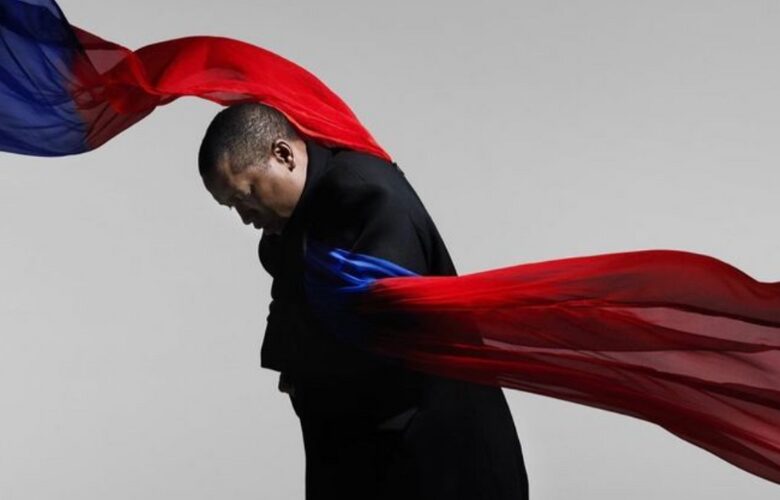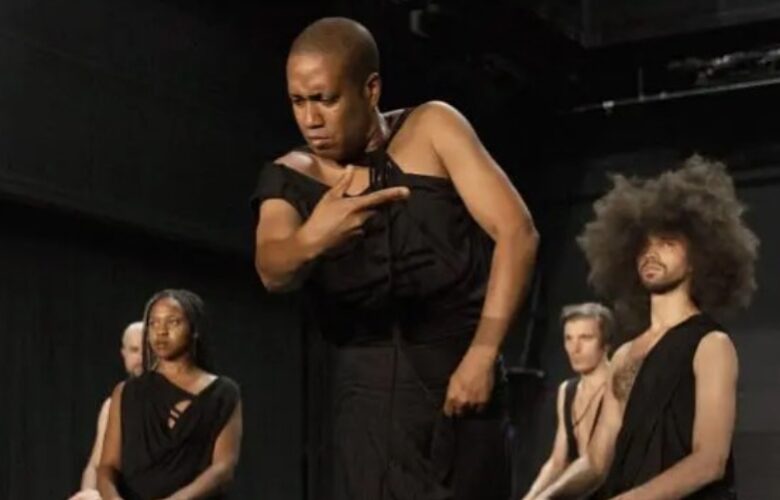Interview with Trajal Harrell

In this interview with Trajal Harrell, he gives an inside look into the making of his showThe Romeo. Recently performed at the Holland Festival in Amsterdam, Trajal brings to life a new outlook on what inspires classic stories. While taking creative expression to a whole new level, Trajal addresses the audience by making them ponder the everlasting question “What if?”
Drew Janine: How long have you been working onThe Romeo?
Trajal Harrell: I got invited to do this show in March 2022… The show premiered in spring 2023. I had worked on a “Juliet and Romeo” before and that was one of the inspirations for calling this The Romeo. I wanted the title to not need translating. I wanted everyone to understand the emotions and connotations that come with the mythology of a Romeo or a romantic figure. It’s not just connected to Shakespeare’s character. There are many inspirations.
DJ: Why use a brown paper floor rolled across a dance floor rather than a standard dance floor?
TH: It’s mixed with a bit of straw grass matting also. I’m always trying to make a work of art. I was thinking about history and paper and I was thinking about different ways that art was written throughout history. Each work is art unto itself. And I asked what can the floor look like and add? We are tracing a fictional history of dance on this paper- a kind of (choreographic) writing.
DJ: The amount of costume changes, is this a purposeful statement towards something?
TH: It’s an operation that’s always in my work. It’s this idea of turning runway movement into dance.That of course comes from the voguing tradition.
DJ: How do you direct your dancers to get into their unique characters?
TH: There’s no formula for that. They work on embodying certain elements. Each moment is different, and each movement is created specifically for that moment.

DJ: What was the inspiration for the show?
TH: It’s a tracing of dance and one element is the different places, cultures, and time.
DJ: Were the dancers characters ones they developed themselves or ones they took from history or other instances?
TH: We don’t work on characters. We work on the moments in the dance. Each section maybe there’s a specific dance and we work on that. We try to understand the dance itself and its composition. What is the relationship of the dancers to each other and the audience.
DJ: Some of your dancers have been working with you for several years. Do you get to work with them often?
TH:I think the oldest is with me for about 16 years. We’re lucky that we tour a lot. I wouldn’t be the choreographer that I am without them. You develop these skills over years. You see how it’s developed and part of that development is in dialogue with them. The work is theirs, it’s not only mine… I feel very lucky. I never tire of it. It’s also nice when new people come. So far it’s still getting richer and deeper.
DJ: What was your inspiration for the set?
TH: I saw the lattice of a gate in Tokyo and a beautiful fashion show by Chanel. They used this kind of gazebo. I wanted something to interact with the stage space sculpturally and that could exist without the dance… I thought it was a great way to move the dancers on and off the stage.
Photo Source: Trajal Harrell’s Instagram (@trajal)
Back to Home
Editor's Note: At StageLync, an international platform for the performing arts, we celebrate the diversity of our writers' backgrounds. We recognize and support their choice to use either American or British English in their articles, respecting their individual preferences and origins. This policy allows us to embrace a wide range of linguistic expressions, enriching our content and reflecting the global nature of our community.
🎧 Join us on the StageLync Podcast for inspiring stories from the world of performing arts! Tune in to hear from the creative minds who bring magic to life, both onstage and behind the scenes. 🎙️ 👉 Listen now!

